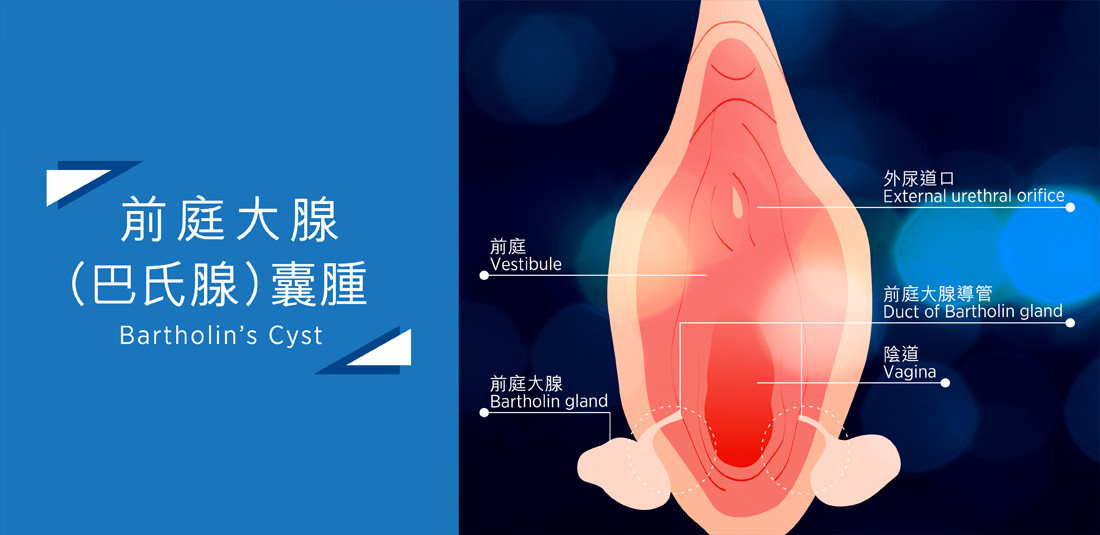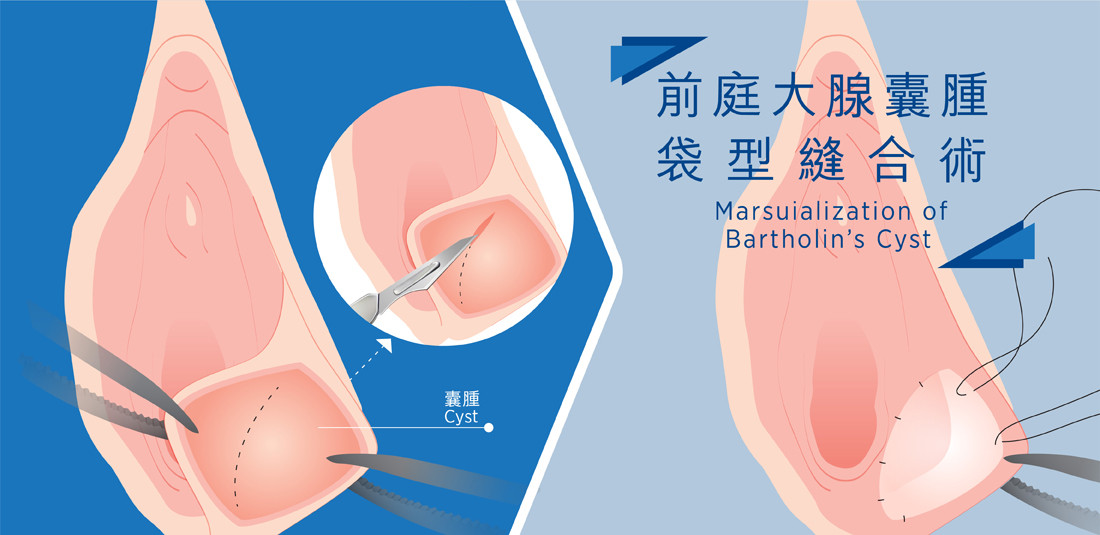Bartholin’s Cyst

Understanding Bartholin’s Cysts: Causes, Symptoms and Treatment
Miss A noticed a lump near the vaginal opening that resembled a pimple. It was painless and didn't itch, so she initially didn't think much of it. However, after a few days, the lump unexpectedly grew larger, about the size of a blueberry! Miss A began experiencing severe pain while walking or sitting, making it extremely uncomfortable to move. This lump may not be a typical pimple or folliculitis; it could be a Bartholin's gland cyst!
Understanding Bartholin’s Cysts
The Bartholin’s glands, also known as the vestibular glands, are located on both sides of the vaginal opening. Normally, they cannot be felt. Their primary function is to secret lubricating fluid during sexual activity to moisten the vagina. When the opening of the Bartholin’s gland becomes blocked due to chronic irritation, friction, or bacterial infection, the lubricating fluid cannot be released and becomes trapped, forming a cyst.
Bartholin’s cysts are generally painless. However, if the cyst becomes infected, it can develop into an abscess, causing pain and potentially leading to fever.
Who is at high risk for Bartholin’s cysts?
- Women between the ages of 20-30
- Women of reproductive age
What are the symptoms of Bartholin’s cysts?
In the early stages, unless infected by bacteria, patients with Bartholin’s cysts may experience swelling or painless lumps near the external genitalia. Most cysts initially appear on one side of the vagina. However, once the cyst becomes infected, it can develop into an abscess and rapidly increase in size. At this stage, patients may experience tenderness, warmth, redness of the external genitalia, pain during urination, and discomfort while sitting or standing, to the point where walking becomes painful. In severe cases, symptoms such as fever, headache, increased white blood cell count, and swelling of the inguinal lymph nodes may occur.
How are Bartholin’s cysts treated?
The doctor will discuss appropriate treatment options with you based on your symptoms.
Conservative Treatment
Asymptomatic patients are often diagnosed during routine gynaecological examinations. If there are no symptoms, conservative treatment can be chosen, which involves regular monitoring of the cyst's size. If the cyst shows a tendency to increase in size or if other symptoms develop, further treatment can be considered.
Medical Treatment
For small abscesses with mild symptoms, medical treatment can be used. This treatment typically involves prescribing antibiotics and pain relievers. In some cases, the abscess of the Bartholin's gland may spontaneously rupture and release pus, and proper wound care may help the patient avoid surgery.
Surgical Treatment
If medical treatment is ineffective, if the abscess reaches a size of 2 cm or larger, or if there are significant pain or fever symptoms, surgical intervention may be necessary to drain the pus. In cases of recurrent Bartholin's cysts, marsupialization can be performed once the infection is under control, reducing the chances of recurrence. Marsupialization can be carried out at a day surgery centre. During this procedure, the doctor will suture the inner wall of the cyst to create a small pouch. The purpose is to establish a permanent drainage opening, reducing the buildup of secretions and minimizing the likelihood of recurrence. If the cyst continues to recur after surgery or if the condition causes significant distress, the ultimate option to consider is the removal of the Bartholin's gland.

How to prevent Bartholin’s cysts?
- Maintain personal hygiene by changing underwear daily and regularly changing sanitary pads during menstruation.
- Opt for breathable underwear and avoid wearing tight-fitting pants to reduce friction in the external genital area.
- For individuals who experience Bartholin's gland cysts related to sexual activity, taking necessary precautions and using condoms appropriately before engaging in sexual intercourse can be helpful.
- If any unexplained swelling or lumps appear in the external genital area, seek medical attention promptly.
- Recurrence of Bartholin's gland cysts is common. In certain cases, removing the Bartholin's gland or identifying underlying causes (such as diabetes) may be beneficial.
Frequently asked questions
- Can I squeeze out the Bartholin’s cyst myself??
- My Bartholin’s cyst has no symptoms. Can I leave it untreated?
- Is surgery always necessary for Bartholin's cysts?
- Does shaving or waxing pubic hair cause Bartholin's cysts?
You should never attempt to squeeze out the cyst or its contents using your hands or tools. Using unclean surroundings or tools can increase the risk of infection and worsen the condition.
While the cyst may not currently cause any issues, leaving it untreated increases the risk of infection and abscess formation. It is recommended that you seek assistance from a doctor.
Not necessarily. Mild cysts may resolve on their own or rupture, and surgery may not always be required. Depending on the situation, the doctor may prescribe anti-inflammatory or pain-relieving medications or antibiotics. Warm water baths can help alleviate pain or promote cyst resolution, but they are generally suitable for patients without infection or severe symptoms.
It is possible. Excessive grooming of pubic hair can irritate or infect the skin in the genital area, leading to inflammation of the Bartholin's gland. It is advised to avoid excessive grooming and maintain good hygiene in the genital area.
Our Team
Virtus Obstetrics and Gynaecology specialists
-
Specialty Services - Obstetrics and Gynaecology